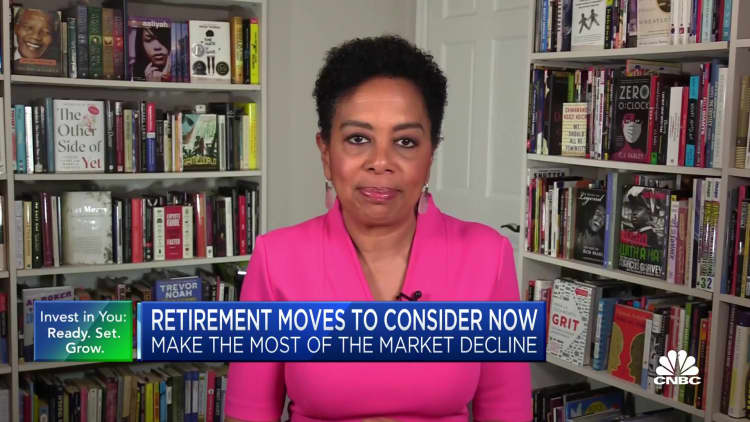Many people think of Roth IRAs as a retirement-savings vehicle for adults. But children who earn income can also save for retirement using this tax-advantaged savings vehicle.
This year's Roth IRA contribution limit is $6,000 for people under 50 years old. A person earning less than that for the year can contribute the total of his or her earned income. Earned income refers to monies earned from a job or self-employment, which includes a paid position in a family-owned business.
There's no minimum age to contribute. So, for instance, if a 14-year-old child earns $500 as a camp counselor or a 16-year-old earns $3,000 as a lifeguard, or a 10-year-old earns $300 as a shelf-stocker for a family-owned bodega, each can contribute up to that amount to a custodial Roth IRA opened by a parent for the child's benefit. A custodial Roth account only takes a few minutes for the parent to open at an online brokerage such as Schwab or Fidelity.
More from Invest in You:
Here's everything you need to know about taxes, 401(k) plans and IRAs
Savvy mom leveraged a 529 savings plan to give son a debt-free college education
Here's how to pick between a savings and money market account
It's also a simple transfer process once the child reaches the age of majority, generally 18 or 21, depending on the state.
Still, many people don't realize these types of accounts exist and the multiple benefits they offer, including decades of tax-free growth. "Opportunity costs are one of the largest costs out there," said James A. Colavita, a certified financial planner with GenTrust in New York.
Here are three reasons to open a custodial Roth on your child's behalf:
Tax-free investment growth potential
Money in a Roth IRA is contributed after-tax and you can withdraw contributions made to a Roth IRA at any time, without worrying about taxes or penalties. If you withdraw money before age 59 1/2, you face taxes and a penalty on your earnings, with certain exceptions. These exceptions could offer additional incentive to children who may balk at being asked to sock away their hard-earned money for 50 or 60 years.
For instance, they could use up to $10,000 for a first home, tax and penalty-free, so long as the account has been established for at least five years. They could also decide to use Roth money for qualified education expenses. This will avoid the 10% penalty, but they will still pay income tax on the earnings portion.
Also, because it's a Roth, the IRS doesn't require mandatory distributions out at age 72 like a traditional IRA. So the money can continue to grow for longer, said Keith T. Barberis, managing director and partner with Barberis Wealth Management in Bethesda, Md.

Compound interest advantages for children
"Time is your best friend or your worst enemy when you're an investor," Colavita said. "If you start early, time is your best friend."
Daniel Hawley, a certified financial planner with Hawley Advisors Wealth Planning in Walnut Creek, Calif., offers the hypothetical example of a child who starts saving at age 10 and contributes $500 a year for eight years. Assuming a 9% return on investment, the child would have a nominal account value of around $478,000 at age 67. That translates into an inflation-adjusted value of about $142,500, using a constant inflation rate of 2.5%, his figures show.
Had the child contributed $1,500 a year over the same time period, the account would have grown to about $1.4 million at age 67, or about $407,000 adjusted for inflation. "It's a fabulous wealth building mechanism. The earlier you start, the less you have to contribute on the backend," Hawley said.
Also, because of the long time frame until retirement, children should be invested aggressively, Hawley said. "You don't want to sit in a low-risk balanced fund," he said.
Teaching personal finance early
There's been a bigger push in recent years to ensure children are taught financial literacy skills in school. Among states requiring personal finance education in high school, nearly 1 in 4 students will take a related course before they graduate this year, according to the 2022 Next Gen Personal Finance State of Financial Education report.
Even so, many children don't have a basic understanding of investing concepts, or the skills necessary to be prudent investors — and they aren't necessarily learning the skills at home.
Yet 93% of teens believe they need financial knowledge and skills to achieve their life goals, and 97% of parents echo this sentiment, according to a March survey from Greenlight Financial Technology.
That's where something like a Roth IRA can be a wonderful teaching opportunity — both from an investment and work-ethic standpoint, advisors said. "It teaches them about investing, the benefits of compounding, the healthy investing habits, and it incentivizes them to work," Barberis said.
Another benefit is the ability of parents, grandparents, family or friends to contribute the full amount, or a portion of it, on the child's behalf. This could help a child who is hesitant to part with some or all of their earnings, and it also provides a financial boost for the future.
"It tells the child, 'Wow this really is important because my parents don't always like to give me money for everything, but they are giving me money for this,'" Colavita said.
SIGN UP: Money 101 is an 8-week learning course to financial freedom, delivered weekly to your inbox. For the Spanish version Dinero 101, click here.






